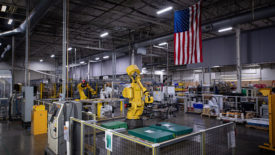Robotics Assembly
Robotics
ATI’s Multiaxis Force and Torque Sensors Are Compatible With FANUC Robots
August 23, 2023
Never miss the latest news and trends driving the manufacturing industry
Stay in the know on the latest assembly trends.
JOIN TODAY!Copyright ©2025. All Rights Reserved BNP Media.
Design, CMS, Hosting & Web Development :: ePublishing











